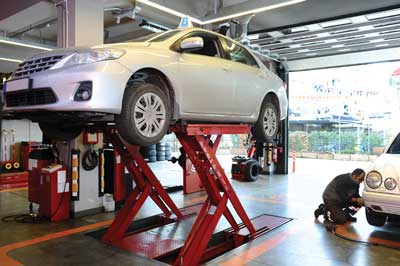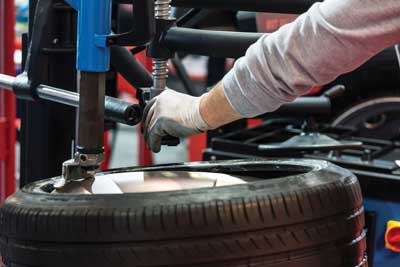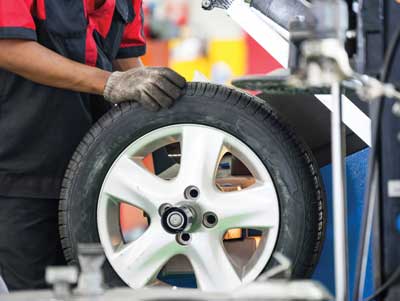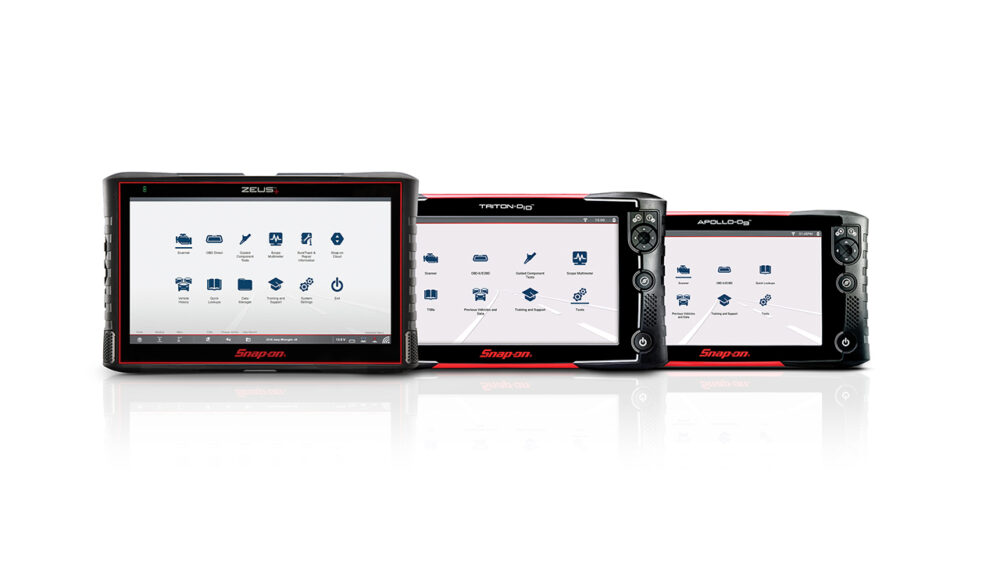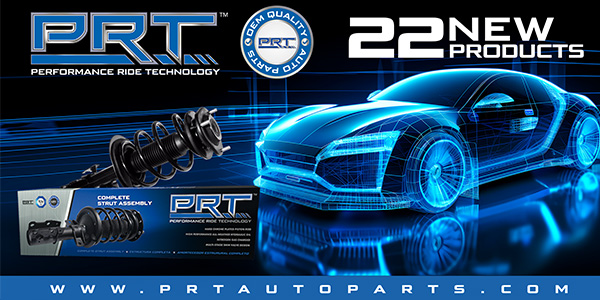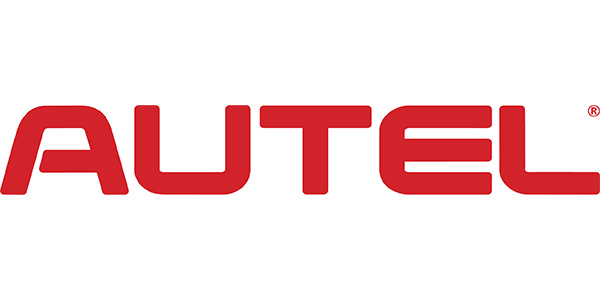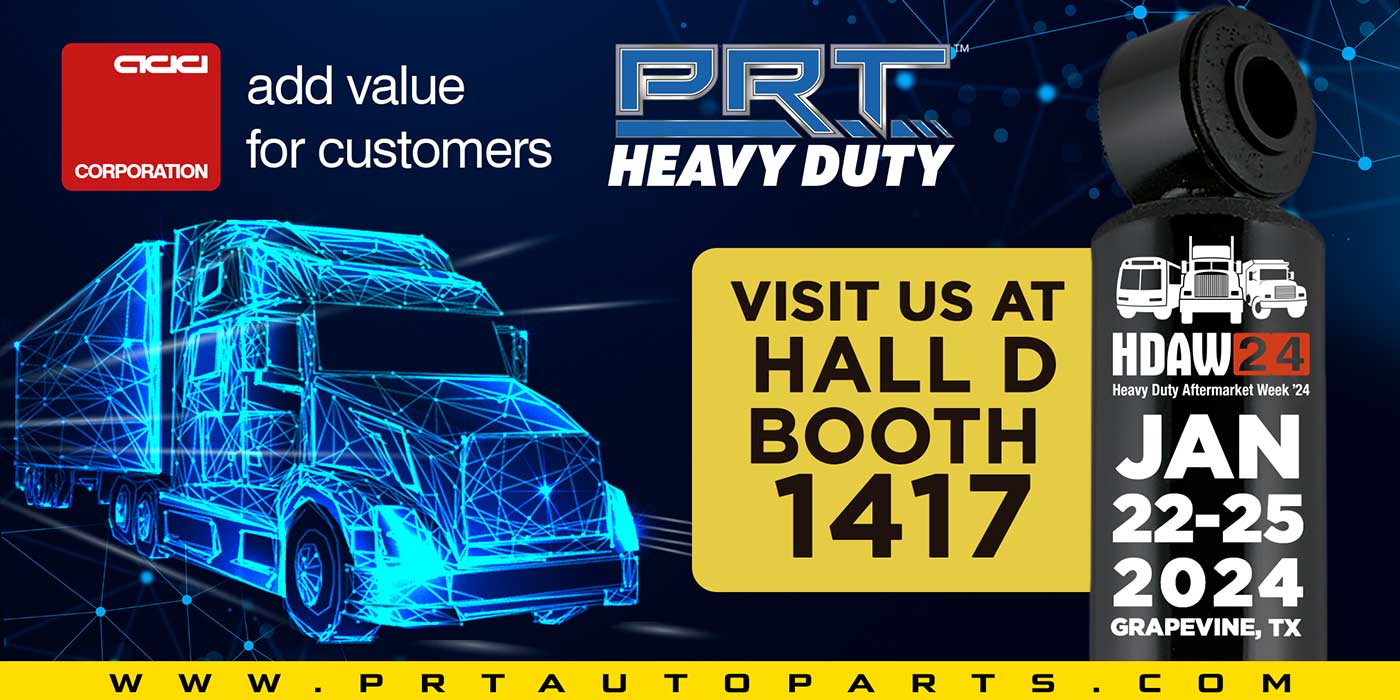Alignment Machines
1. Think Long Term: Long-term shopping does not mean finding the lowest price, but finding the best “value balance” of features that can boost productivity and durability. This value can be measured in the quality of the product, depth of support and innovative features. Simply put: Pay now or pay more down the road for poor quality, spotty service and crippling productivity problems.
2. Features: Choose features that can help to maximize the technician’s time and decrease the number of trips around the car. It could be as simple as an air hose at each corner of the lift for tire inflation. Also, it could be a system that can eliminate the need to manually pull and replace the pins on the turn and slip plates. Ask any alignment technician about what is the most time-consuming part of an alignment and they will say that it is pulling the pins on the plates. With some alignment systems, an alignment might require two or three trips around the vehicle to replace the pins.
3. Updated Specs: Being able to continuously update the software is important. Alignment machines are long-term investments and you don’t want to be stuck a few years down the road unable to service your customers’ newer vehicles because you haven’t updated the software on your alignment machine. Some alignment consoles can update through wifi and even pull vehicle specs directly from the internet.
4. Preventing Downtime: Damage to the heads is one of the leading causes for alignment equipment downtime. Wireless alignment systems eliminate the chance of wires being tripped over. When performing an alignment, set-up time is shorter because technicians no longer have to deal with wires or wireless transmitters. Other machines use cameras to calculate alignment readings, which can save time and increase profits.
5. Training: When looking for alignment training for your technicians, look for courses that offer a balance between classroom time and hands-on experience in the shop setting. Technicians should be afforded the opportunity to use the alignment machine under real-world conditions. Many equipment manufacturers have regionalized training centers so technicians won’t have to travel across the country for classes.
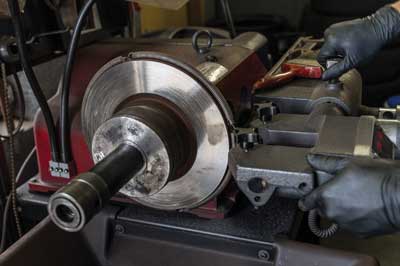 Brake Lathes
Brake Lathes
1. Shop Location: Before purchasing a brake lathe, be sure to map out your shop so you know where the brake lathe will be positioned. You need to know any space limitation you may have. Placing the brake lathe where the most brake work is done in the shop can save a lot of time and add to the profitability of the brake job.
2. Be Prepared: Not having the right adapters and accessories can be a productivity killer. Be sure to purchase the adapters and accessories your shop needs to speed set up and prevent mistakes.
3. Bench/On-Car: When choosing a lathe, take time to go back through your repair orders to see what types of jobs your shop is seeing the most of on a regular basis. This will help you decide if you need a bench or on-car lathe, or both. An on-the-car brake lathe can eliminate lateral runout with the rotor installed on the vehicle. This can help to eliminate pulsation problems.
4. Sharp Bits: Be sure you always have sharp bits. Cutting a rotor in one pass is essential for productivity.
5. Training: Equipment purchases are large investments for repair shops. When purchasing a new brake lathe, be sure to take advantage of any training the manufacturer may offer. This can be as easy as going to the manufacturer’s website and watching a training video. Technicians need to be able to take advantage of all the features of the lathe in order to increase the profitability of the brake job.
Lifts
1. Safety: Lift safety is paramount. Make sure the lift you are considering purchasing is ALI/ETL Certifed. More information on this third-party certification program can be found at www.autolift.org.
2. Accessories: Lifting equipment comes with many different options and features. Carefully consider all options so you are able to equip your shop with equipment that will reduce job time and increase profits.
3. Service: Repair shops can’t afford to have a lift down for an extended period of time while waiting for repairs. Before purchasing a lift, be sure to ask about the warranty. The sales representative should be able to tell you how long it will take to get replacement parts and who will install them so your shop can be back to full strength as soon as possible.
4. 2 Post/4 Post/Scissor: There are advantages and disadvantages to each type of lift. This decision will depend on the types of jobs the lift will be used for, the amount of space available, whether you own or lease the property, if you need the lift to be portable, and even how high the ceiling is. A good sales representative should be able to walk you through this buying process.
5. Financing: Purchasing a lift is a large investment for your shop. Take time to look at all the leasing and financing options in order to make sure your investment fits within your budget.
Tire Changers
1. Cost: Tire changers come with a wide range of features. Increasing levels of convenience, efficiency and comfort come at a price, so take the time to determine what is best for your shop. Be sure to take the time to compare the various tire changers on the market to find the one that is best for your shop.
2. Specialty Tires: Depending on the variety and number of specialty tires your shop handles, you may wish to add a tire changer for motorcycle tires, golf cart, go-kart, ATV and lawn mower tires, or machines designed for tubeless commercial truck, off-road and agricultural tires.
3. Low-Profile Tires and TPMS: A basic tire changer can handle conventional tires and wheels, but if your shop sees a lot of low-profile, large diameter tires on delicate alloy wheels, look for clamps and bead-separators designed to minimize wheel damage. Wheel protection accessories, such as polymer/plastic covers for clamps and demount heads, can eliminate any metal-to-metal contact.
Some changers can also help take the anxiety of servicing tire and wheel assemblies with TPMS sensors. Theses extra arms and bead loosing tools give the operator better control of the bead on low-profile tires.
4. Shop Requirements: Shop space available may limit the maximum footprint allowable. Air compressor capacity and electric service (110 or 220 VAC) may determine the drive system (air, electric or air/electric combination).
5. Operator Fatigue: A wheel lift helps technicians get heavy tire/wheel assemblies up to tabletop height with less risk of damage. More importantly, a wheel lift reduces operator fatigue and potential for back injury. Well-designed tire changers incorporate ergonomic controls placed to minimize excessive reaching, walking or bending, which improves efficiency and operator safety.
Wheel Balancers
1. Know Your Needs: When shopping for a wheel balancer, it’s important to invest in a balancer that meets the needs of your shop. As with any piece of equipment, the more features it has, the more it will cost. Added features may be beneficial for a high-volume tire store, while a repair shop may not be able to justify the added expenses.
2. Measurement of Tire and Wheel Forces: Road testing every wheel and tire that comes off your balancer is impossible. But, some balancers can simulate a test drive on the balancer.
All tires have some variation in sidewall stiffness. These small variations in stiffness and runout in the rim can cause vibration and pulling of the steering caused by uneven forces. Some balancers use a roller that can apply force the assembly to simulate loaded conditions that are experienced on the road. This type of balancer can measure the forces and recommend tire and wheel placement to cancel out the forces.
3. Ability to Place a Weight Behind a Spoke: This feature can allow a technician to hide a weight behind a spoke so it is not seen by the customer while still keeping the assembly dynamically balanced. Some machines can even detect spoke position using a laser and camera.
4. Touch Screen Navigation: A balancer is a sophisticated piece of equipment. Some balancers are using large touch screens not just to tell the technician where to place the weight, but enabling them to input information faster. The screen can also be used for training on the machine. This can allow a tire technician to learn on the job.


